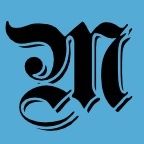SIMON GRECH
Just as the printing press opened the way for the wider spread of knowledge, the internet laid the ground for a platform where participation in all matters social can be discussed. The technological leap in reproducing text meant that a new class of individual could explore classical texts and weigh in on domestic affairs.

Image: Economist Front cover - July 9th 2011 edition
The rise of the internet has served a similar function, with access to information being made available to an ever larger audience. Although the term global village is now considered clichéd, users can now check the weather in another continent or stream events or concerts taking place in a different timezone. We now speak of users who read digital newspapers on their iDevices, whilst “liking” posts made by others whom they might not know.
Yet, the world wide web could only become the digital version of the coffee house through what is known as the Web 2.0. Popularised by a conference held in 2004, the term is now used to refer to the internet as a platform based on the concepts of accessibility and collaboration. The creation of content is now also open to the average user.
It is the system that saw Google’s rise to the top and individuals starting their own blogs even though they have little or no knowledge of HTML coding. The emphasis on open platforms, no matter whether your computer is a PC, Mac or Linux machine, is also one of the main reasons behind the success of social media. Networks such as Facebook, Twitter, Youtube and Instagram thrive on it and are now seen as the order of the day.
More importantly, social networks serve a function that goes beyond the compulsive instagramming of meals. New media and its earlier forms, such as fora and blogs, allow for individuals to take part in shaping the way the events around them are being reported. The Arab Spring is a case in point. Social platforms such as Facebook and Twitter played a significant part in reporting events through the eyes of activists which may have fallen foul of censor. The international community was in the heart of the action, being treated to a beat-by-beat account as events unfolded. All this could be done online.
This can be further explained by the theory elaborated upon by Jay Rosen, dubbed “the people formerly known as the audience”. The news industry was previously seen as operating a top-down approach. Competition was rather limited as entry fees to participate in the market for the transmission of information was prohibitively high.
However, web 2.0 technologies have stepped in and introduced a new scenario where it presents itself as a channel through which viewers and readers are participating in the making of the news agenda. The audience is no longer seen as a collection of bystanders but as a community of potential citizen journalists. Established news agencies such as CNN and Al Jaazera are running the corresponding platforms, iReport and Sharek, to monitor and tap into a news wishlist of sorts. As a consequence, media users are now also connected to each other through a horizontal flow when it comes to conveying media and news content (citizen-to-citizen). Through the sourcing of news stories, news agencies are investing in a wider network of correspondent while keeping an ear to the ground.
The model has wider repercussions and spans over other areas of public interest. Social networks can no longer be dismissed as a mere fad or trend of a generation obsessed with Reality TV stars. Digital media has made each and every smartphone, laptop or tablet a window onto the world’s state of affairs.
The internet has become an iCoffee House, with social networks being the source of knowledge and information that can be discussed with / by whomever would like to join the debate. All the features of a conventional coffee house are there, except for one: you’ll have to brew your own coffee.




